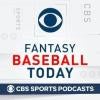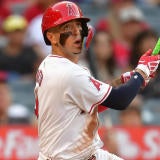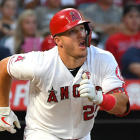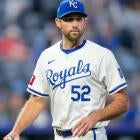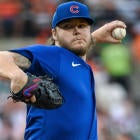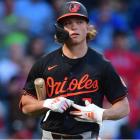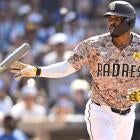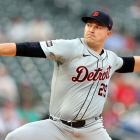The players made it official Tuesday, validating commissioner Rob Manfred's imposed 60-game schedule by signing off on the health and safety protocols.Baseball is back, in other words, but it's back like we've never seen it before. Some rules have changed, both to counteract the possible spread of COVID-19 and to account for a hurried and considerably shorter schedule.
Here's a summary of everything we know (thanks mostly to the reporting of Jayson Stark and Bob Nightengale) and its impact on Fantasy Baseball:
- Players will report for testing on July 1. Two days later, Spring Training 2.0 will begin. The ramp-up process will come quickly, in other words, though this second spring training won't look much like a normal spring training, consisting more of workouts than games. Teams will have enough players on hand to hold intrasquad scrimmages, but they'll set their own schedule and data will be virtually nonexistent. We'll all be leaning heavily on beat reporters, especially when it comes to managers weighing in on players and strategies.
- Players will report to their major-league venues (with the possible exception of the Blue Jays, who are subject to a separate federal government). That exasperating scenario wherein every team would play out the season at its spring venue won't come to pass, which means we fortunately won't have to adjust our rankings for the arcade-like environment of the Cactus League.
- MLB can relocate teams for health and safety reasons as needed. We can't just assume, then, a player's environment will remain the same all season, adding another unknown variable in a season chock-full of them. Would a team just relocate to its spring venue, as the Blue Jays are likely to do? Possibly, but with the way things are looking in Florida and Arizona right now, other minor-league venues could instead play host to major-league teams.
- The season will begin on Friday, July 24 (for all but four teams, who'll open a day earlier) and end on Sunday, Sept. 27. So we're talking only a month from now. In all, that's 9 1/2 weeks, at least two of which Head-to-Head Fantasy leagues will presumably need to devote to their playoffs. Getting more "decisions" out of those first 7 1/2 weeks so that a team isn't at the mercy of unfavorable matchups will be paramount. Having each team face two or three opponents each week is one way to go about it. You might also consider dividing the season into smaller scoring periods rather than just defaulting to Monday lineup locks.
- Each team will play 60 games in 66 days. It's a little more than one-third of a typical season, which research by Eno Sarris shows might be enough time to determine a rightful winner, but it won't be enough time for things to even out on an individual level. You'll see outlier performances on both the high and low end, with an uncharacteristically hot or cold start having the potential to make or break a season.
- Of those 60 games, 40 will be against the same division and 20 will be against the corresponding division in the opposite league. To break it down further, each team will play its in-division opponents 10 times, its opposite-division rival (like Dodgers vs. Angels) six times and its other opposite-division foes either three or two times. Primarily, it's the percentage of games within the division that will have the greatest impact on player value — teams are going from 11.7% of their schedule in a typical season against their division rivals to 16.7% in this shortened season. The AL divisions have the most defining features, with the AL East featuring the most hitter's parks of any division, the AL West featuring the most pitcher's parks and the AL Central featuring the most rebuilding teams.
- Players can opt out with pay if they're deemed to be high-risk. This one actually has the potential to turn Fantasy Baseball on its head. If a qualifying player is being paid anyway, might he opt to sit just out of an abundance of caution? Do we even know who would qualify? David Dahl, for one, seeing as he's missing a spleen, but we don't have every player's entire medical history. Players living with a high-risk individual would not automatically be in line to receive full pay, according to The Athletic, though teams are free to exercise their own discretion. It's worth noting that among the many players with a pregnant spouse is Mike Trout.
- The schedule includes no doubleheaders, as Jayson Stark points out. There was a time when more doubleheaders was thought to be an appropriate way to fit more games into a shorter span, but the latest health advisories suggest that players are better off limiting their exposure to one another. We'll still see some unorthodox pitching strategies, but more because of the reduced buildup time and abbreviated schedule than because pitchers don't have enough built-in rest time.
- The DH will be in effect even in the NL. There was some confusion on this point late Monday, but preventing pitchers from batting falls under the health and safety umbrella. It'll raise the projected ERA for every NL pitcher, mixing up the rankings a little, but will also create new opportunities for interesting hitters like Dylan Carlson, Austin Riley and Wil Myers. Chris Towers offers some suggestions for who might benefit.
- Rosters will be expanded to 30 players for the first two weeks, then reduced to 28 for the next two weeks, then reduced to 26 for the rest of the season (September included). Remember all that talk of a prospect-palooza with the upcoming roster expansion for a shortened season? Yeah, we may have gotten a little ahead of ourselves. For the better part of the season, rosters won't be expanded at all, and for the time they are expanded, those extra spots will most likely be used on bullpen arms since pitchers won't be fully stretched out yet. It seems to be the entire point, in fact, given that if a prospect isn't good enough to make the team outright, a couple weeks of part-time play probably won't be enough to change hearts and minds.
- Each team would have a 60-player pool to choose from, 40 of which are already determined by the 40-man roster. Whichever of those 60 players aren't on the major-league roster would form a taxi squad that would work out at a nearby minor-league venue, presumably holding scrimmages to stay game ready. It will allow teams to continue the development of their top prospects while also keeping a supply of injury replacements game-ready.
- Up to three taxi squad players could travel with the team, but one would have to be a catcher. This rule is obviously in place in case an injury replacement is needed on the road, but it would also mean a select few prospects would have a chance to work out with the major-league club. It could lead to some useful insights.
- The transaction freeze ends Friday at noon ET, so we can all watch with bated breath as Yasiel Puig finally chooses a team. Or more like one finally chooses him. If it's an NL team with a DH need, he has a chance of making a considerable contribution still, but most lineup spots across the league are already accounted for. Jim Bowden suggests the Giants as a possible destination, which would be great for Puig's playing time (though perhaps not his power potential).
- The trade deadline will be Aug. 31. Yes, trades will apparently still be a thing, though it's worth asking if a player would need to be quarantined before joining his new team. Significant movement seems unlikely with prospect development stalled and an uncertain financial future, but as wide-open as every playoff race still figures to be at that point, the deadline could surprise us.
- The IL for all players will still be just 10 days, which means teams could continue to use it simply to skip a pitcher's turn in the rotation, as the Dodgers in particular have a habit of doing. We'll presumably see less of that, though, with no reason to safeguard innings over a shortened season.
- All extra innings will begin with a runner on second base until one team wins. It's not quite sudden death baseball and still allows for games to continue indefinitely, but the likelihood of one team or another bringing that runner home any given inning should prevent the sort of marathon games that wouldn't be good for anyone's health in this environment.
- Position players are free to pitch again. Is it of real consequence in Fantasy Baseball? No, but the league was looking to crack down on this growing practice, imposing strict limitations on how and when a position player could pitch, so it's a matter of some interest. Teams can't afford to give away games, though, with only 60 on the slate, so they'll probably make a greater effort to keep things competitive even if it looks like they're getting out of hand.


